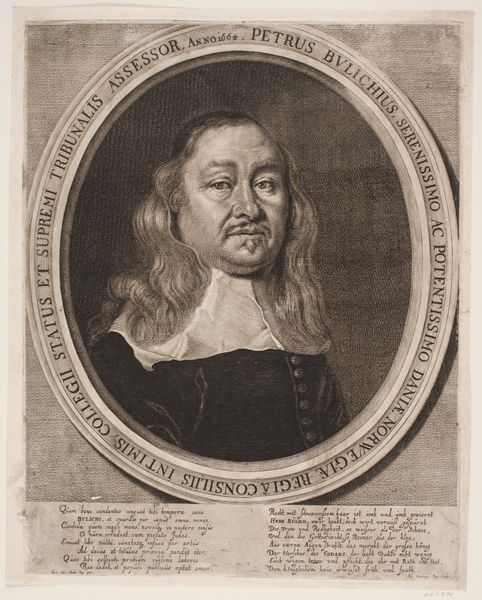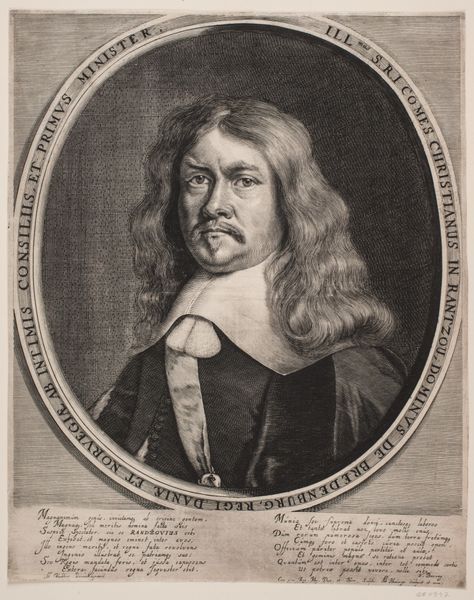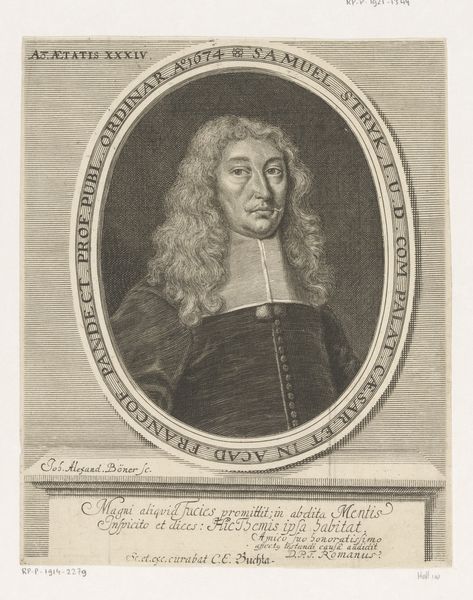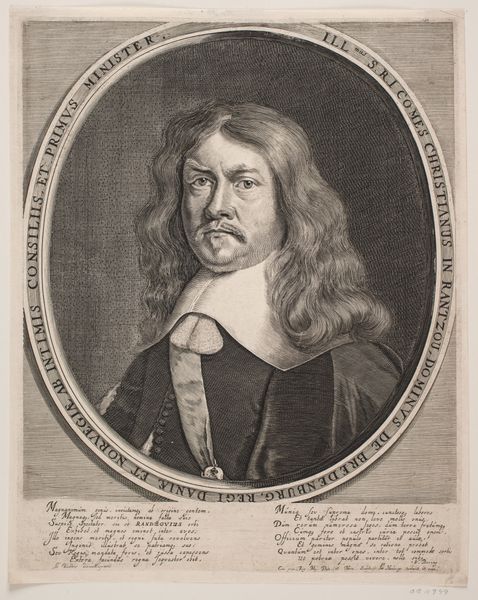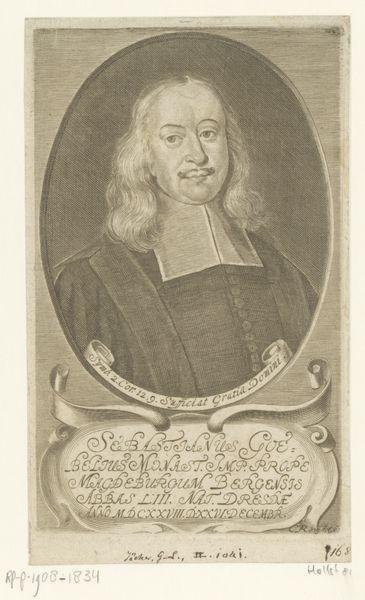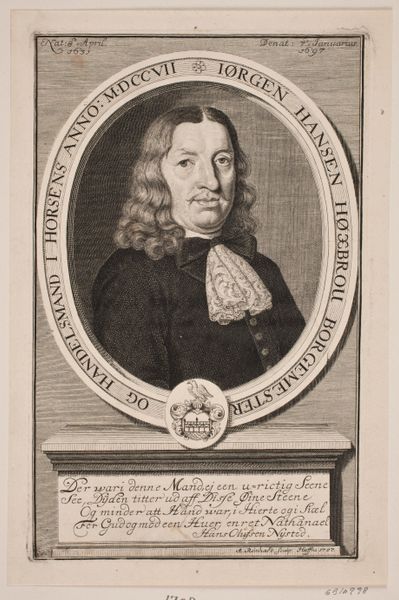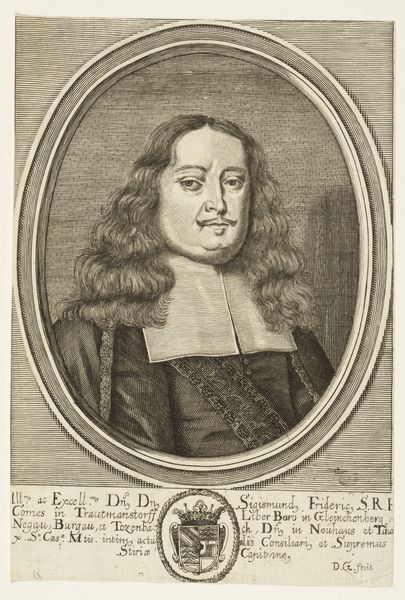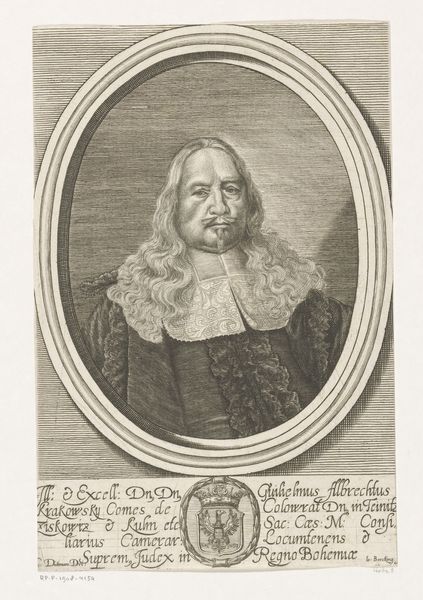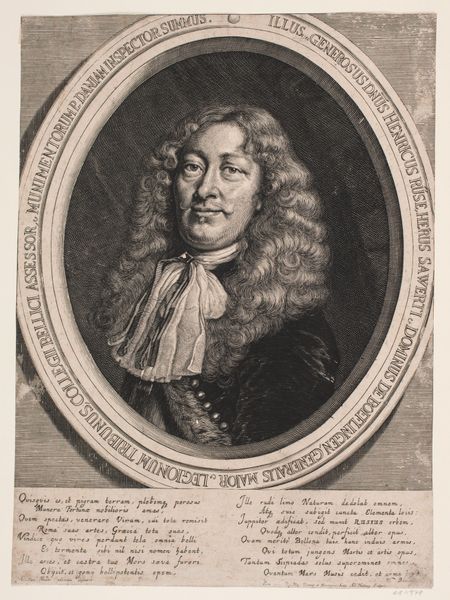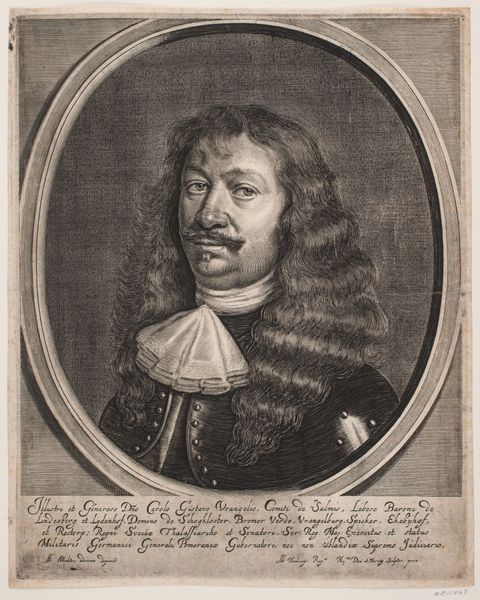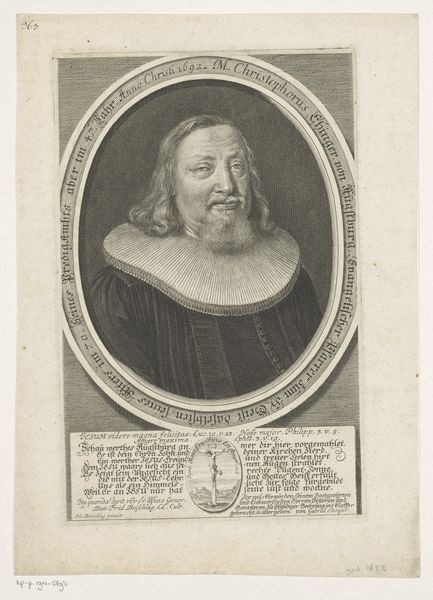
print, paper, engraving
#
portrait
#
baroque
# print
#
old engraving style
#
paper
#
portrait reference
#
history-painting
#
engraving
Dimensions: 347 mm (height) x 277 mm (width) (plademaal)
Editor: This engraving, "Peter Bülcke," created between 1664 and 1667 by Albert Haelwegh, presents a dignified portrait within an oval frame. The lettering around the portrait adds to the formality, but it’s his direct gaze that I find most compelling. How do you interpret this work, considering its historical context? Curator: The formality you notice is crucial. Consider the historical and political context. Bülcke served the Danish-Norwegian crown, a period marked by intense power struggles and shifting alliances. How might this portrait, commissioned during his lifetime, contribute to the construction and maintenance of his image and, by extension, the power of the state? Editor: I hadn’t thought about it as actively constructing power. I was more focused on it as a simple depiction of someone important. The engraving style makes him look serious, authoritative… maybe even unapproachable? Curator: Exactly. Think about the role of portraiture in the 17th century. It wasn't merely about likeness; it was about projecting an ideal. How does the artist utilize conventions of Baroque portraiture to convey status and authority? Consider the gaze, the clothing, even the surrounding inscription – each element reinforces a carefully constructed narrative of power. Editor: So, every element serves to legitimize Bülcke's position and the power he represents? It makes me think about who gets to be remembered and how history often silences marginalized voices. Curator: Precisely! And asking those questions is exactly where we need to be. This piece allows us to critically examine the systems of power at play. By engaging with these artworks, we begin to recognize how these dynamics continue to shape our world today. Editor: I see the image in a new light now, as a deliberate statement about power, which opens doors to understanding societal and political structures of that time. Thanks! Curator: And you helped clarify how crucial it is to question these "official" portrayals and look for the counter-narratives often absent from history.
Comments
No comments
Be the first to comment and join the conversation on the ultimate creative platform.
